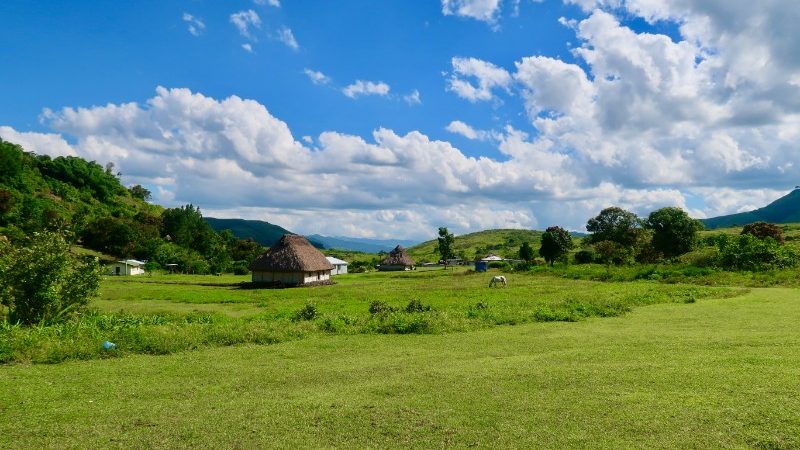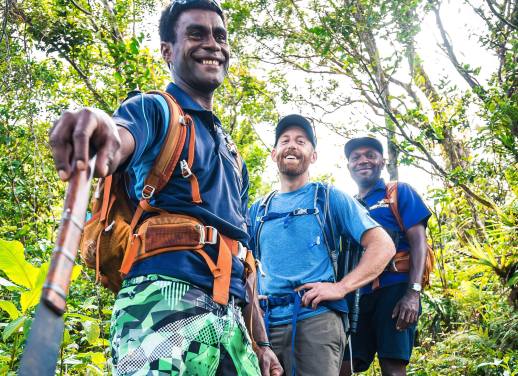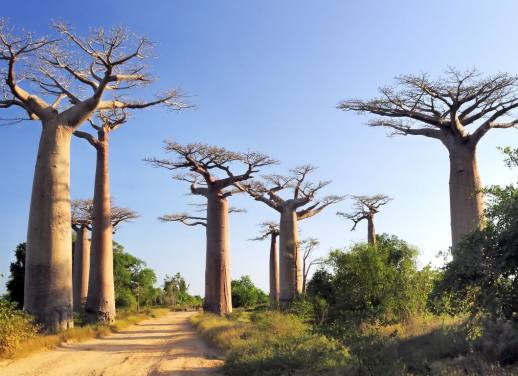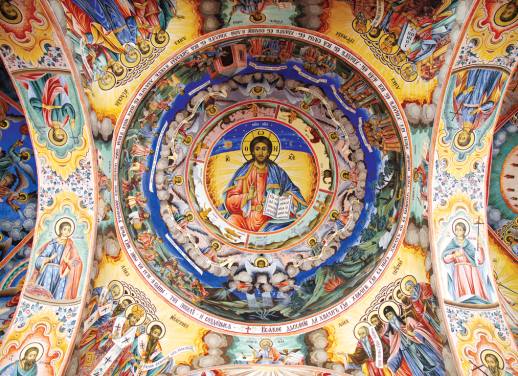Traditional-style thatched roof homes, called bures, pop-up like mushrooms in the surrounds of the grass-covered central highlands, giving little away to a first-time visitor.
I’ve travelled four hours from the coastal pocket of Sigatoka Sand Dunes National Park to the heart of Viti Levu, Fiji’s largest island. As a guest to the village of Nabutautau in the province of Nadroga-Navosa, I’m wearing a sulu, a wrap-around style of skirt worn by both men and women throughout the islands as the country’s national dress. I’m here to learn about the village and its community-based tourism project – both having been shaped by a single story – involving a British missionary and Nabutautau’s chief, that took place 152 years ago.
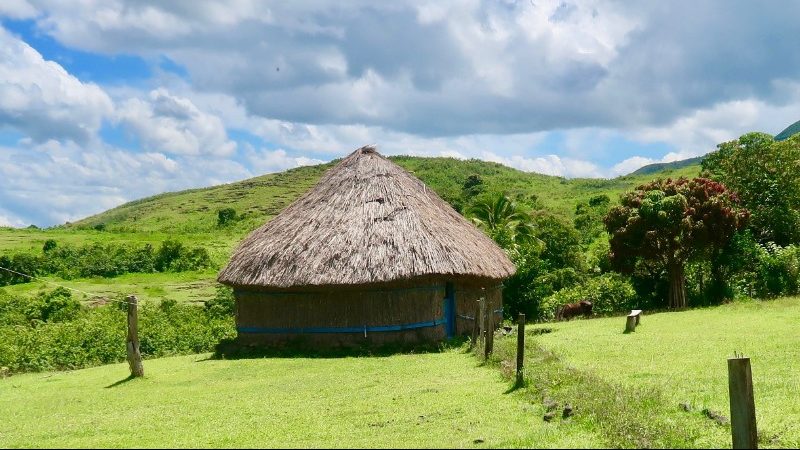
Our bure in Nabutautau
It’s customary in Fiji to welcome visitors by holding a savusavu – better known as a kava ceremony – a gesture of sharing and cultural respect that predates colonisation of the South Pacific.
EXPLORE OUR RANGE OF FIJI ADVENTURES HERE
After formalities have taken place, the first introduction kicks off with Mr Vilitati Rokovesa (Mr Roko), a village elder and local guide. As we sit down cross-legged to lunch – of curried potato salad, warm roti, perfectly ripe mango and boiled cassava – I’m told that Nabutautau is largely self-sufficient in growing its own fruit and vegetables, uses solar energy and relies partly on tourism to sustain their livelihoods. “We mostly farm crops and welcome visitors into our homestays as another source of income,” Mr Roko explains.
Another reason for the slow trickle of travellers to the district of Navatusila is that whispers are spreading among avid hikers for its enticing combination of walking trails connecting villages – only known to locals.
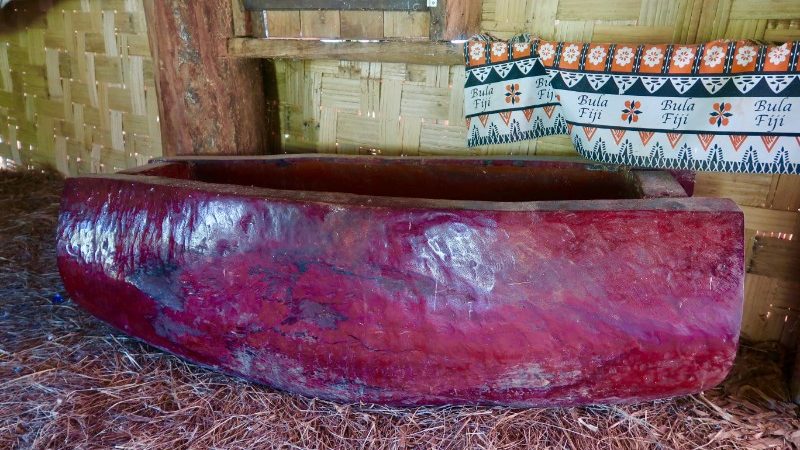
A traditional Fijian drum.
Eager to find out more, I’m led into the largest bure in the village where Mr Roko shows me a rectangular-shaped drum. “The drum is traditionally played for two days after a village chief passes away,” he explains, while gesturing towards the wooden instrument. On the wall sits a dusty-looking Tanoa (kava bowl) and, judging from the scratches on its surface, the large wooden vessel has served a steady number of guests over the years.
JOIN US ON AN 11-DAY EXPEDITION THROUGH FIJI – FULL DETAILS HERE
We leave the bure behind and trail towards the back of the village, crossing over a footbridge that stretches to the bottom of a steep hill. There’s a light breeze and the afternoon sun gazes down with intensity from a deep blue sky.
I ask Mr Roko how he feels about sharing the account of the ill-fated Reverend Thomas Baker. “It’s a story that’s important and we want to share with people,” he replies with no hesitation. “We held a sorry ceremony with [Rev. Thomas Baker’s] relatives years ago and now we have made amends.”
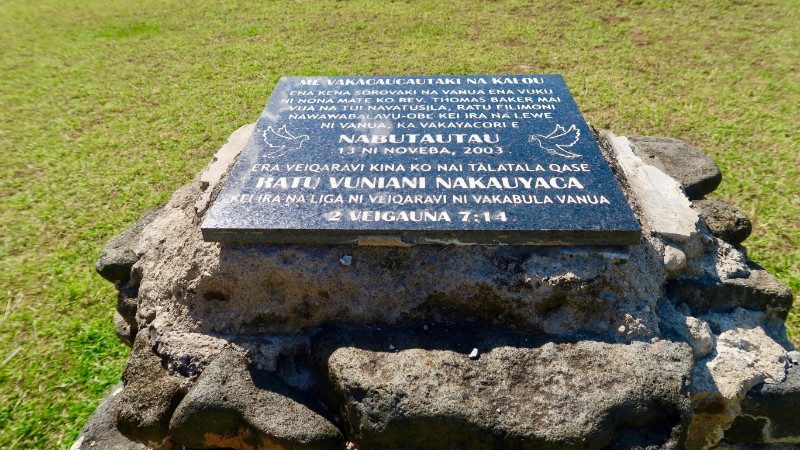
Commemorating the reconciliation between Rev Baker’s descendants and the Nabutautau community.
The sorry ceremony Mr Roko refers to is a community event held in 2003 after Rev. Thomas Baker’s descendants were invited to Nabutautau to take part in a gathering to reconcile the actions of their ancestors who killed and ate the Reverend and the group he was travelling with during a visit to the highlands on 21 July 1867. Mr Baker is the only missionary known to be a victim of cannibalism in Fiji. So, why did the chief decide to order the killing of the Reverend?
RELATED: WHAT I DISCOVERED HIKING TO A WILD WATERFALL AND DRINKING KAVA IN FIJI’S HIGHLANDS
As we stand at the edge of the forest, Mr Roko recounts the events that led to the fate of Rev. Thomas Baker and his Fijian teaching assistants. “It’s said that he knew it was a dangerous expedition,” Mr Roko tells me. “There was conflict during this time between the tribal groups along the interior of this island and British colonies that had formed alliances with one chief. The tribes in the highlands were the last resistance to colonial settlement.”
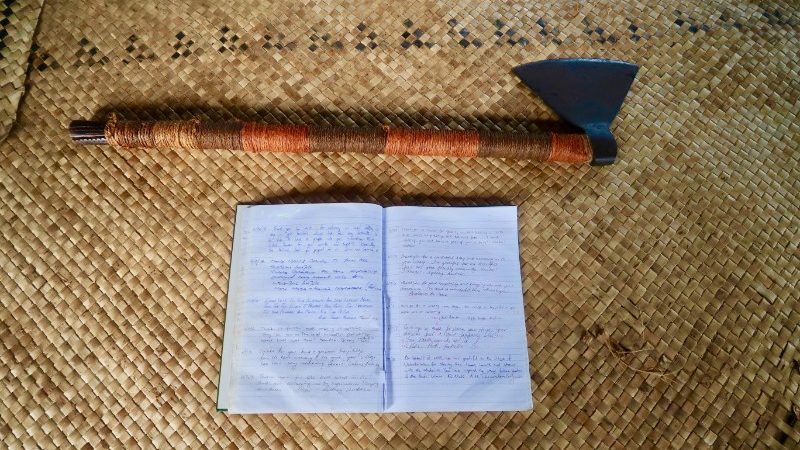
The weapon used by the villagers to kill the Reverend and his assistants.
History records point towards the role of Bauan island chief and self-proclaimed king of Fiji, Ratu Seru Epenisa Cakobau, who struck up an alliance with the British in the 1870s to conquer the highland people.
Mr Roko says the story passed down from his ancestors is that the Reverend touched the head of the chief – a taboo and sign of great disrespect – while retrieving a comb that he had gifted from his hair. The chief then ordered for the group to be killed as they left the village. But two of the men from the group managed to escape, and so the tale made its way back to the settlement.
RELATED: 7 REASONS WHY FIJI IS THE ULTIMATE ADVENTURE DESTINATION
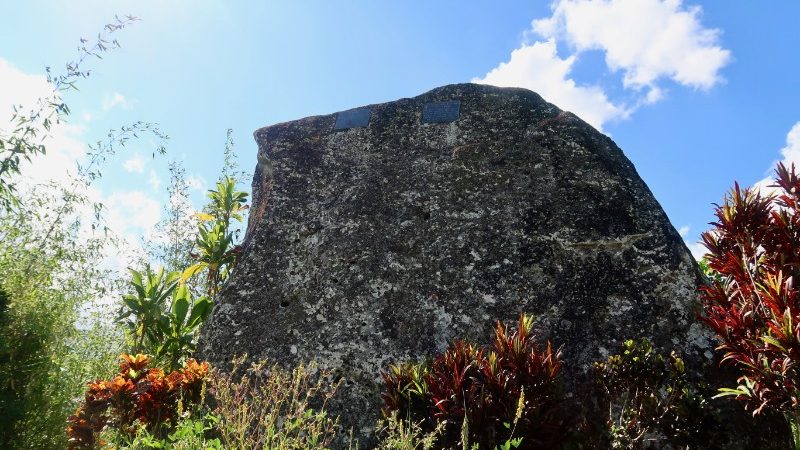
The memorial to Rev. Thomas Baker.
At this point we’ve reached the top of the hill. Sweat is gathering on Mr Roko’s forehead and I’m relieved it’s not just me feeling the heat of the day. I look up towards an overshadowing rock that holds two bronze plaques dedicated to Rev. Thomas Baker and his travelling companions. The stone is large and looming; it’s almost as if the naturally formed monument sitting alone on the hill was waiting to be turned into a headstone.
Mr Roko has met with historians who have visited the village to share knowledge of the events that took place leading up to the final act. “We welcome anyone that wants to come here to stay with us and learn,” he says.
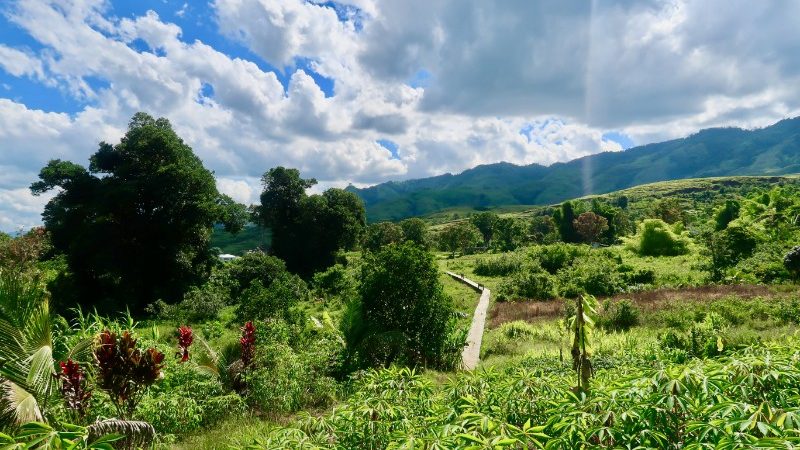
The bridge to Rev. Bakers memorial.
I ask Mr Roko, in his opinion, what he thinks about the missionaries that came to Fiji. Mr Roko looks back at me and says that for him, they changed the lives of Fijians. “We’d still be cannibals,” he adds with a chuckle. And I laugh too. The Fijian humour has brought a lightheartedness to all my interactions with locals throughout the islands. I’ve noticed the openness in discussions about the country’s past and the depth in which the people are making steps to preserve their future.
SUBSCRIBE TO INTREPID’S NEWSLETTER FOR INSPIRATIONAL STORIES, TRAVEL TIPS, AND GIVEAWAYS
As a fourth-generation descendant of the village chief, Mr Roko’s passion for sharing the community’s story shines in his expressions. And it’s not just him that gives insights to the story of the reverend. He tells me about the guides that are being trained in the community, and how the tourism working group alternates so families can participate in hosting visitors and still have time to look after their crops. It’s an impressive setup wholly owned by the village.
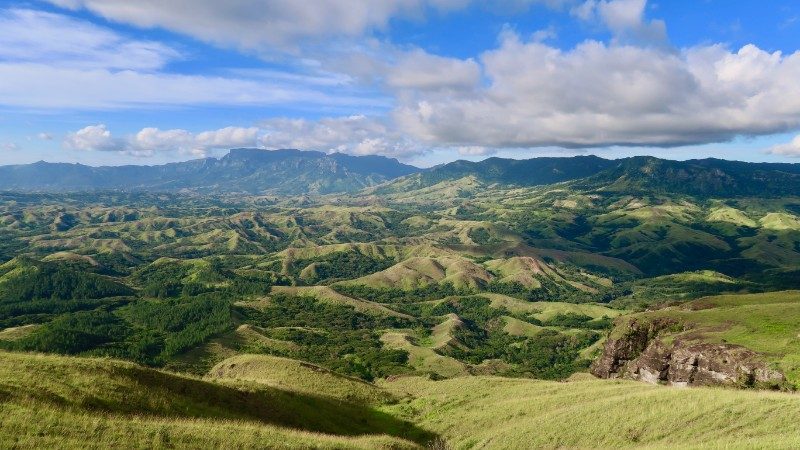
Navatusila, Fiji.
The most intriguing part is that Rev. Thomas Baker’s descendants are still in contact with the community. “We’ve had Thomas Baker’s descendants return and other relatives discover the story, then contact us to visit and stay in the village,” Mr Roko says. “We’ve had people from around the world come visit us.”
I take one last look down and upon the land where the people of Nabutautau have called home for centuries, and thank Mr Roko for sharing the stories of his his ancestors.
Move beyond the resorts and take an adventure into the heart of Fiji on an 11-day Expedition. Find the full details here.
All images by Jenna Hoare.

